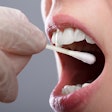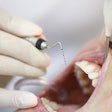
Thinking about creating an oral health education program? You may want to think again. A new review found education alone was the least effective community-based oral health promotion strategy for combating dental diseases in children.
 Shalika Hegde, BDS, MPH, is a research fellow at Dental Health Services Victoria in Melbourne, Australia.
Shalika Hegde, BDS, MPH, is a research fellow at Dental Health Services Victoria in Melbourne, Australia.Researchers analyzed 38 studies that evaluated various large-scale oral health promotion efforts targeted at children. While oral health education alone was not found to be effective, education did help combat caries when combined with supervised toothbrushing or professional preventive care, according to the Cochrane Library review (Cochrane Database of Systematic Reviews, September 15, 2016).
"Our review found little evidence that oral health education alone can make a difference in the level of tooth decay, although some studies have reported improvement in gum health, oral hygiene behaviors, and oral cleanliness," wrote Shalika Hegde, BDS, MPH, one of the study authors, in an email to DrBicuspid.com. Dr. Hegde is a research fellow at Dental Health Services Victoria in Melbourne, Australia.
What oral health promotion strategies work?
While the idea of preventing dental diseases, rather than treating them once they've developed, has become more popular in recent years, large, systematic reviews have yet to determine which oral health promotion strategies are the most effective. Therefore, an international team of researchers set out to determine which promotion strategies have been proved to help the largest number of children at the lowest cost.
"Community-based population-level interventions targeting childhood have the potential to improve health, development, and well-being throughout childhood and subsequently into adolescence and adult life," the authors wrote. "Targeting risk factors and promoting healthy practices at an early stage in life may also reduce oral health inequalities between social groups."
Dr. Hegde and colleagues began by searching 16 databases for studies that evaluated population-level oral health promotion initiatives. They ended up with more than 41,000 search results, which they narrowed down to 38 studies that included 119,789 children from 21 countries.
The researchers excluded studies that were older than 1996; only targeted particular groups, such as children with special needs; or that were of chemical nature alone, such as xylitol gum or community water fluoridation. They also only included studies that focused on children 18 years old or younger.
Dr. Hegde and colleagues then categorized the studies by intervention type:
- Three studies evaluated reducing sugar intake and/or access.
- Seventeen studies looked at oral health education alone, such as using classroom lessons, videos, comics, or brochures.
- Eight studies researched oral health education in combination with supervised toothbrushing with fluoride toothpaste.
- Ten studies evaluated oral health education in combination with other interventions, including professional preventive oral healthcare, such as fluoride varnish, teeth cleaning, and sealants.
The researchers analyzed which types of interventions led to significant improvements in permanent tooth surfaces (DMFS), erupted permanent teeth (DMFT), and the deciduous teeth and surfaces (dmft and dmfs).
They found that oral health education alone had no significant impact on dental caries in permanent or deciduous teeth and surfaces, and the quality of evidence for oral health education studies was low or very low.
| Mean difference in decay outcomes between experimental and control groups for oral health education alone | ||
| Score type | Mean difference | p-value |
| DMFT | 0.12 | 0.31 |
| dmft | -0.30 | 0.47 |
| DMFS | 0.01 | 0.93 |
"There is a general perception that oral health education will change oral health risk behaviors and promote good oral health practices," Dr. Hegde said. "This thinking is fundamentally flawed, as knowledge gained alone will not lead to sustained changes in oral health."
However, the researchers also found that oral health education was effective at combating caries in deciduous teeth when combined with supervised toothbrushing. In addition, oral health education combined with professional preventive care in a dental clinic reduced caries in children's permanent teeth.
| Mean difference in decay scores between experimental and control groups for oral health education with supervised toothbrushing | ||
| Score type | Mean difference | p-value |
| dmft | -0.97 | < 0.00001 |
| dmfs | -1.59 | 0.004 |
"Integrating oral health education with supervised toothbrushing with fluoridated toothpaste or professional oral care practices can improve dmft and dmfs, but effects on DMFT and DMFS were smaller," the authors wrote. "Other interventions, such as those that aim to promote access to fluoride, improve children's diets, or provide oral health education alone, show only limited impact."
How can the profession use the findings?
While the review benefited from having a diverse number of countries, a large number of children, and varied intervention settings, there were still several shortcomings. Notably, the researchers graded the evidence as only having moderate to very low quality, and many studies didn't report cost-effectiveness or adverse effects.
In addition, few studies were conducted in low-middle-income or low-income countries, and most studies lasted less than one year.
Nevertheless, various oral health professionals can apply the findings to their careers. Foremost, Dr. Hegde and colleagues recommended that researchers improve the standards and scientific rigor of their studies. They also hope researchers will include additional data points, such as age and socioeconomic status, when conducting oral health research.
Finally, Dr. Hegde noted that the study reinforces the need for general dentists to think about how to provide care for individuals outside of a clinical setting and, instead, where children are located.
"To improve oral health, we need to focus on prevention, invest our scarce resources meaningfully, and look beyond just clinical settings," she said. "Strong links between children's settings and community-based dental services are required to ensure that children receive the treatment and preventive services needed, as early as possible."



















